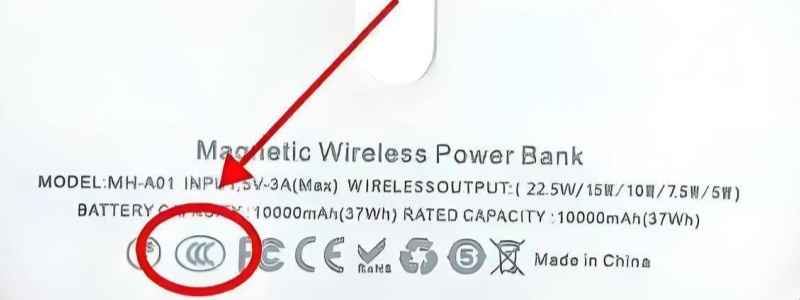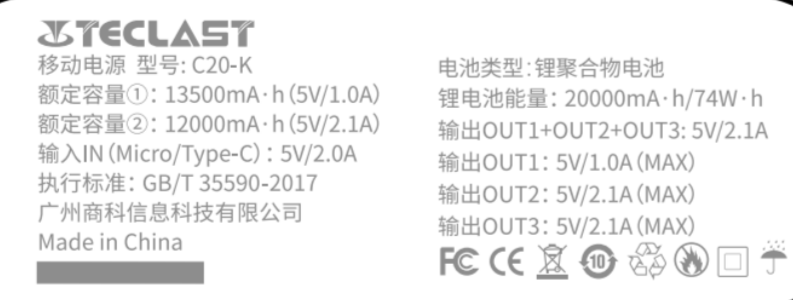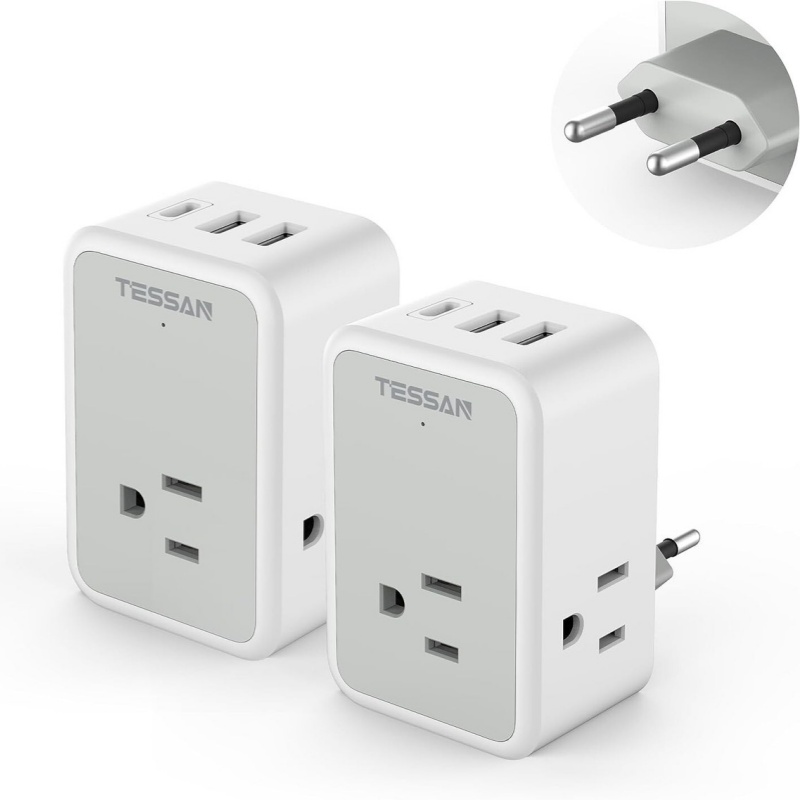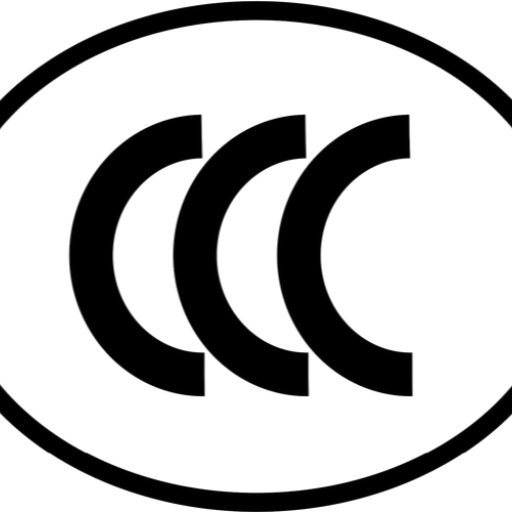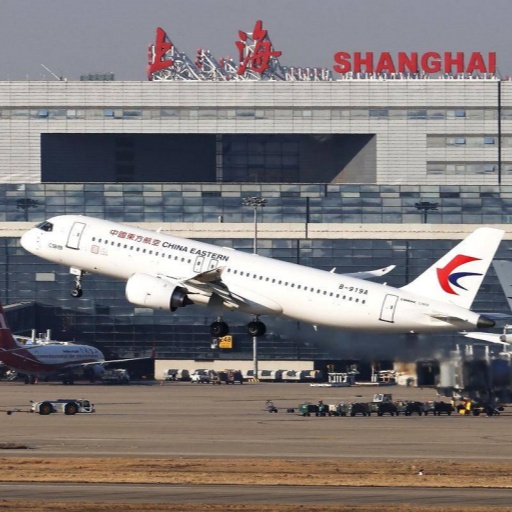Shenzhen ROMOSS Technology Co., Ltd. has recalled several ROMOSS-branded power bank models: PAC20-272, PAC20-392, and PLT20A-152. A total of 491,745 units are affected. In response, China’s Civil Aviation Administration has issued an urgent notice banning passengers from bringing power banks without CCC (3C) certification or any of the recalled models on domestic flights.ROMOSS has been hit hard by the recent power bank controversy and is now on the verge of collapse.
Many users are worried about whether they’ll still receive their refunds, and there’s growing concern over how to properly dispose of power banks that don’t meet safety standards.So, why were these power banks recalled? What exactly is 3C certification, and why does it matter? As travelers scramble to replace risky devices, many realize they don’t actually know how to identify a compliant power bank. That’s where this guide comes in.We’ll explain what 3C power bank certification really means, how to read the labels, and what red flags to avoid—whether you’re shopping online, packing for a trip, or scanning a shared power bank at the airport.
What Does the 3C Certification Actually Guarantee?
- Pass
- Fail
What Is 3C Certification?
3C certification, short for China Compulsory Certification, is a legal safety requirement for electronics sold or used in China—including power banks. Since 2025, any power bank without a 3C mark is banned from domestic flights and retail shelves. This isn’t just a formality. A 3C-certified power bank must pass strict national standards for battery safety, casing insulation, short-circuit resistance, and thermal protection. Without it, the device may pose a serious fire or explosion risk.
No 3C label? Then it’s not compliant—plain and simple. Power banks without a verified 3C mark fail to meet China’s mandatory safety standards. Forget flashy packaging or good reviews—check the label and match it with the CNCA official database before buying.
What Safety Standards Power a 3C Power Bank?
The 3C mark isn’t just a sticker—it proves your 3C power bank meets national safety benchmarks. First, there’s GB 31241-2022. This standard checks battery safety. It tests for short-circuit resistance, overcharging, and overheating. If a device fails, it can’t pass 3C. Then there’s GB 4943.1, which applies to the overall structure. It requires flame-retardant casing, reinforced USB ports, and internal insulation. These standards aren’t optional—they’re legally enforced across China.
You might wonder why 3C is stricter than CE or FCC. That’s because Chinese regulators focus more on real-use scenarios. For example, tests simulate drops, heatwaves, and faulty cables—stuff that actually happens. Brands cutting corners with cheap lithium cells often fail these tests. So if you see a power bank with 3C and GB codes printed clearly, that means it survived harsh quality checks.
If you’re shopping for a 3C power bank, don’t just look at mAh capacity. Check if it complies with these standards. Legit models list them on the box or shell. Without them, even “big brands” can be risky if they’re made for export only and skip China’s rules.
How Does 3C Compare to Global Safety Certifications?
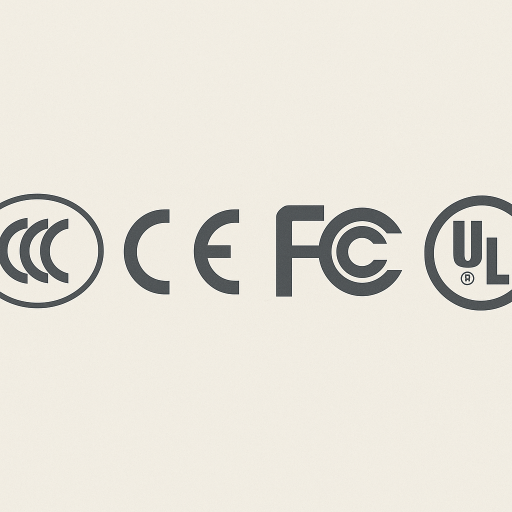
3C Vs CE, FCC, UL
Certification Comparison: 3C Vs CE, FCC, UL
| Certification | Region | Mandatory? | Key Focus Areas | Product Examples | Authority / Issuer | Notes |
|---|---|---|---|---|---|---|
| 3C | Mainland China | Yes | Electrical safety, battery stability, fire resistance | Power banks, phones, chargers | CNCA (Certification and Accreditation Administration of China) | Must be 3C certified to be legally sold or used in China |
| CE | European Union | Yes | Consumer safety, electromagnetic compatibility, health | Electronics, toys, medical devices | Self-declared or via Notified Body | CE alone does not guarantee compliance with Chinese regulations |
| FCC | United States | Yes | Radio frequency emissions, EMI/EMC | Wireless devices, computers | FCC (Federal Communications Commission) | Focuses on signal interference, not fire or battery safety |
| UL (UL 2056) | US / Canada | No (voluntary) | Flammability, circuit integrity, battery risk assessment | Consumer power banks, charging stations | Underwriters Laboratories | Often used for quality branding, especially in retail markets |
Key Highlights:
- Only 3C is accepted for legal sales and transport in China.
- CE is a general entry ticket for EU markets, but does not test for lithium battery thermal runaway.
- FCC focuses on whether the device emits safe levels of radio waves—not physical safety.
- UL (especially UL 2056 for power banks) is often seen as a “quality badge,” but is not legally required.
What Makes 3C Power Banks Safer in Real Life?
3C power bank rules aren’t just paperwork—they change real usage. In China, these certified power banks must pass heat resistance, short-circuit, and drop tests before hitting the shelves. That means they won’t explode if your bag gets bumped in a subway, or if the summer heat hits 40°C. Many cheap brands skip these tests and rely on low-quality lithium cores. That’s why 3C-certified models feel heavier—they often have better shielding and real capacity.
Also, 3C power banks protect your devices. Ever had a phone overheat when fast charging? Certified models use smart chips to regulate output and stop charging once full. They even monitor port temperature in real time. These safety circuits aren’t just for show—they’ve prevented battery fires and melting cables. When your power bank costs more, you’re not just paying for branding. You’re paying for real-life durability, internal safety, and regulatory trust.
Why Is 3C Certification Mandatory for Power Banks in China?
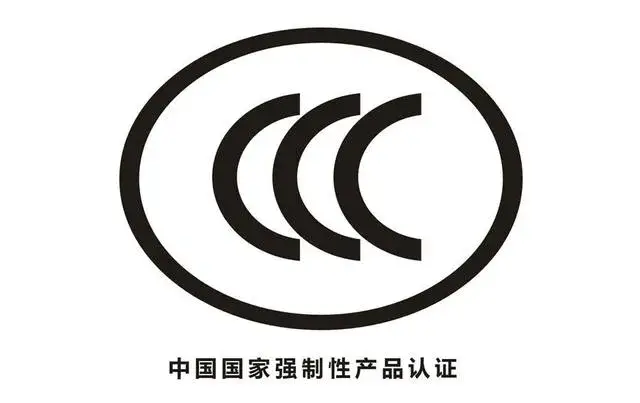
3c logo
What’s Behind the 2025 National Policy Shift?
In 2025, China introduced tighter rules for 3C power banks. Why now? A mix of safety, market chaos, and rising traveler incidents pushed regulators to act. Airlines reported multiple overheating events, especially with low-quality power banks. Some even caught fire mid-air. That’s not just scary—it’s dangerous. The Civil Aviation Administration of China (CAAC) had to respond fast. Meanwhile, the State Administration for Market Regulation (SAMR) noticed widespread fake capacity labels and non-compliant brands flooding e-commerce sites.
To fix this, the government made 3C certification mandatory. It’s no longer just a quality badge—it’s a legal requirement. According to CAAC’s 2024 aviation bulletin, power banks above 160Wh are strictly banned on flights, and only certified products under 100Wh can be freely carried onboard. A joint notice from SAMR and the Ministry of Industry and Information Technology (MIIT) added that products without proper labeling or test reports must be pulled from shelves.
What Exactly Is Banned under the New Rules?
The 2025 regulation doesn’t ban all foreign brands, but it does blacklist non-compliant 3C power banks. So what exactly is banned? First, anything without a visible, valid 3C label. If the stamp is a cheap sticker or missing critical info like energy rating, capacity, or manufacturer ID—it’s out. Second, products on China’s official recall list, updated monthly by SAMR. These include brands with fake batteries, swollen units, or false advertising.
Next, let’s talk about capacity. Devices over 160Wh are not allowed on planes, and anything between 100Wh–160Wh needs airline approval, limited to two per person. If your power bank has no energy rating label, that’s also a no-go. The same goes for any product sold without 3C documentation, even if bought abroad. Shared power banks from unregistered providers are being pulled from metro stations in cities like Guangzhou and Shenzhen.
How to Check a 3C Power Bank Before You Buy or Use It?
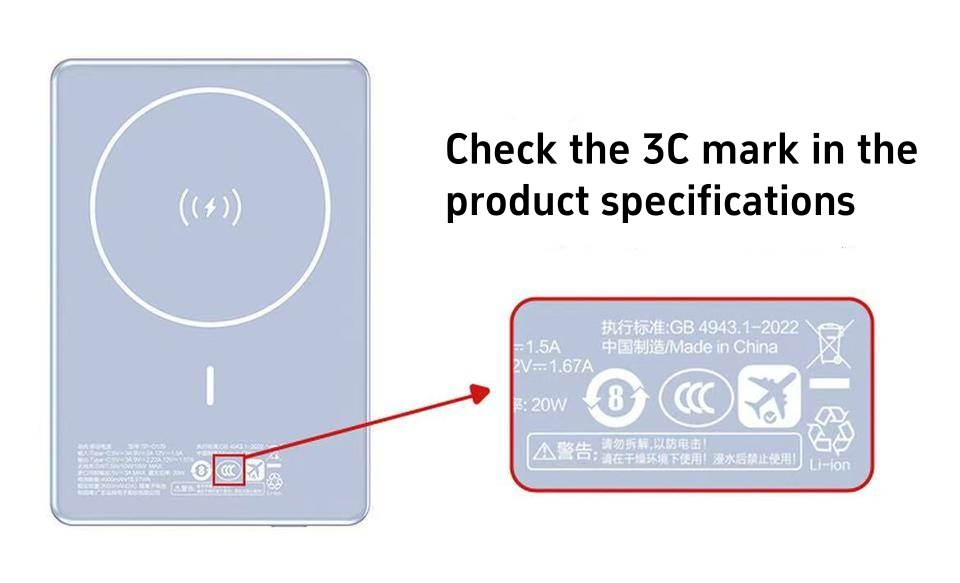
How to Check a 3C Power Bank?
What to Look for on the 3C Label?
Start with the 3C label itself. Real ones are printed or embossed directly onto the case—not stickers. If the logo peels or fades, walk away. Fake 3C marks are often sloppy, with misaligned fonts or low-res prints. This is your first red flag.
Next, check the label’s content. A legit 3c power bank will show:
- Rated Capacity in mAh or Wh
- Voltage level (typically 3.7V or 5V)
- Battery type (Li-ion or Li-polymer)
- Energy efficiency rating
- Manufacturer details, like company name and factory code
Missing any of these? That’s likely a non-compliant product. Don’t just check the box—inspect the power bank itself. Printed specs on packaging are easy to fake. Legit devices have permanent marks on the casing. If something looks vague or oddly worded, skip it.
What Quick Tests Can Spot Unsafe Devices?
You don’t need lab tools. Use basic observation and touch. If a 3c power bank feels unusually light, it might be hollow or low-capacity. Tap it—if it sounds empty or rattles, it’s a red flag. Check the USB ports. Loose, tilted, or crooked sockets suggest poor quality control.
During use, be alert. A safe 3c-certified device shouldn’t overheat, even during fast charging. If it’s hot to the touch—above 45°C—stop using it. Also, test charging speed. If it’s drastically slow with known-good cables, internal issues may be brewing.
Finally, trust your gut. If a product looks too cheap or is from an unknown brand, don’t risk it. Spend a few extra dollars for certified products from official stores or verified platforms. Small checks now can prevent serious problems later.If you’re not sure how to choose a power bank—or have no idea which brands to trust—check out this guide.
Safe Usage Guidelines for Power Banks
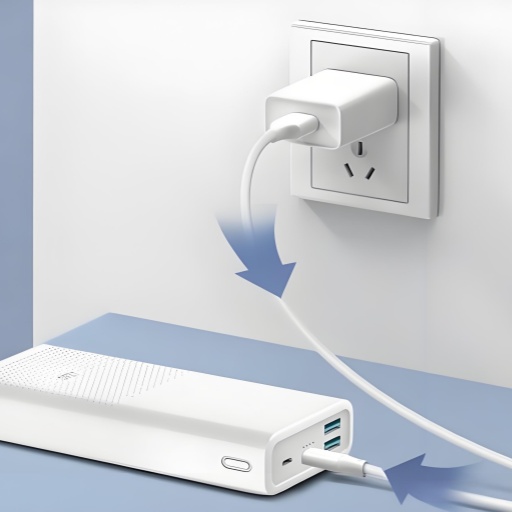
Safe Usage Guidelines for Power Banks
What Habits Keep Your 3C Power Bank Working Safely?
Owning a 3c power bank is just the first step—using it properly is what really matters. Start with simple habits: avoid charging while using your phone. This generates extra heat and can degrade your battery over time. Also, don’t leave your power bank plugged in overnight. Overcharging—even with a certified device—will shorten its lifespan and possibly trigger thermal stress.
Next, always store your 3c power bank in a dry, cool place. Humidity can damage internal circuits. Never leave it in a hot car, on a windowsill, or near a stove. If your device gets abnormally hot—over 45°C—unplug it immediately. Many fires start because users ignore early warning signs. That’s why certified power banks come with overheat protection, but it’s your responsibility to keep it in safe conditions.
Which Accessories and Environments Should You Avoid?
Even a 3c power bank can become dangerous with the wrong accessories. Don’t mix and match cables from unknown brands. Always use chargers with matching voltage and current ratings. Using a fast-charger on an incompatible power bank may cause swelling or short circuits. Also, skip cheap multi-head cables sold in tourist shops—they often lack shielding or quality checks.
Your environment matters too. Avoid bathrooms, beaches, and crowded backpacks. If you carry your 3c power bank with keys or coins, sharp metal can scratch the casing or damage ports. Try keeping it in a dedicated pouch or sleeve. Also, some subway and train systems have begun screening for uncertified devices. Even though your 3C-certified model is legal, being visibly cautious helps avoid delays or suspicion during travel.
Frequently Asked Questions (FAQs)
Q: Can I rent shared power banks without worrying about 3C?
A: Not anymore. In 2025, all shared charging stations must use 3C-certified units. Many older ones got pulled from subway stations and malls. Before renting, look for a 3C mark on the side or ask staff. Brands like Jiedian and Energy Monster now update their inventory regularly. Still, inspect the unit before plugging in—avoid cracked casings or exposed wires. If something looks off, skip it. Rental power banks are convenient, but only when they’re safe and compliant.
Q: Are 3C power banks allowed on China’s high-speed trains?
A: Yes, 3C-certified power banks are totally fine on bullet trains. Conductors rarely check them like airports do, but rules still apply. If your power bank looks bloated or lacks labels, it might get flagged during random checks. Some stations scan your bag at entry—especially in Beijing or Guangzhou. To stay chill, use a compact 3C power bank under 100Wh. Avoid super high-capacity ones unless clearly labeled. Trains have outlets, but power flow can be unstable. So having a safe, certified 3C power bank is your best bet for charging on the go.
Q: Can I bring more than one 3C power bank when flying in China?
A: Yes, but there’s a limit. You can bring up to two power banks between 100–160Wh with airline approval. Under 100Wh? Bring several—but keep them in carry-on, not checked baggage. Each device needs visible energy info. Airlines don’t care how new or branded it is—if it lacks a clear label, it’s a no-go. Also, if one looks damaged or bloated, staff might ask you to trash it. Keep all 3C power banks in original condition, and pack them neatly. Don’t let them roll loose in your bag.
Q: Are 3C-certified power banks more expensive than regular ones?
A: Not really. Prices have dropped a lot since the 2025 rules kicked in. You can find 3C power banks starting from 79 RMB (around $11) on JD.com or Pinduoduo. What you pay extra for is peace of mind—tested battery cells, fire-resistant casing, and better lifespan. Cheap, uncertified models may cost less upfront, but fail fast. Plus, they might get confiscated at airports or stations. If you’re traveling around China for even a week, spending a bit more for 3C isn’t just smart—it’s necessary.
Q: Are cheap 3C power banks safe to use long-term?
A: Not all cheap ones are bad—but check twice. Some budget brands meet the 3C certification minimum but cut corners elsewhere: thinner casing, weaker ports, no surge protection. These pass inspection but may wear out faster. To stay safe, test yours monthly: feel for heat, check if it charges evenly, and listen for unusual sounds. If you want long-term reliability, invest a bit more in brands with both 3C and extra safety guarantees like UL or CE.
Q: Can I recycle old 3C power banks in China?
A: Yes, and you should. 3C power banks still contain lithium cells, which can’t go in normal trash. Many malls, metro stations, and electronics stores have battery recycling bins. In big cities, even Xiaomi and Huawei stores accept old units. Wrap your power bank in paper or a padded envelope, and drop it off properly. It’s safer for you and the environment. If the battery is swollen or cracked, avoid mailing—it may trigger fire sensors during transit.
Q: How often should I check if my 3C power bank is still safe?
A: At least once a month. Even a 3C power bank can wear out with daily use. Check for swelling, strange heat, or slower charging. Loose USB ports are a warning sign too. If your device feels unusually hot or takes forever to charge, stop using it. Many issues show up slowly, not all at once. Regular checks take one minute and can prevent serious damage. Just treat it like you’d check your car tires—small habits, big safety.
Want more China travel ideas? Check out our city guides on Beijing, Shanghai, Guangzhou, and Chengdu.
